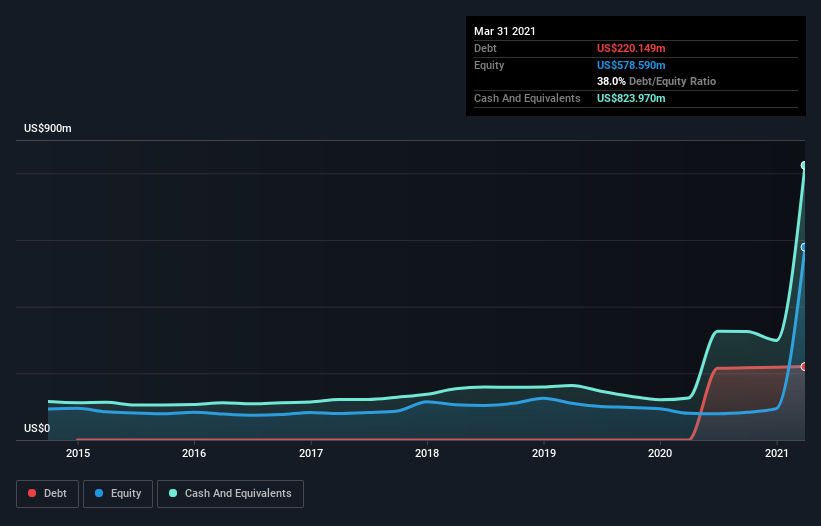Is Varonis Systems (NASDAQ:VRNS) Using Debt Sensibly?
The external fund manager backed by Berkshire Hathaway's Charlie Munger, Li Lu, makes no bones about it when he says 'The biggest investment risk is not the volatility of prices, but whether you will suffer a permanent loss of capital.' It's only natural to consider a company's balance sheet when you examine how risky it is, since debt is often involved when a business collapses. We note that Varonis Systems, Inc. (NASDAQ:VRNS) does have debt on its balance sheet. But the real question is whether this debt is making the company risky.
What Risk Does Debt Bring?
Debt is a tool to help businesses grow, but if a business is incapable of paying off its lenders, then it exists at their mercy. Part and parcel of capitalism is the process of 'creative destruction' where failed businesses are mercilessly liquidated by their bankers. However, a more common (but still painful) scenario is that it has to raise new equity capital at a low price, thus permanently diluting shareholders. Of course, debt can be an important tool in businesses, particularly capital heavy businesses. The first step when considering a company's debt levels is to consider its cash and debt together.
View our latest analysis for Varonis Systems
What Is Varonis Systems's Net Debt?
As you can see below, at the end of March 2021, Varonis Systems had US$220.1m of debt, up from none a year ago. Click the image for more detail. However, it does have US$824.0m in cash offsetting this, leading to net cash of US$603.8m.
A Look At Varonis Systems' Liabilities
Zooming in on the latest balance sheet data, we can see that Varonis Systems had liabilities of US$179.3m due within 12 months and liabilities of US$280.0m due beyond that. Offsetting these obligations, it had cash of US$824.0m as well as receivables valued at US$51.3m due within 12 months. So it actually has US$416.1m more liquid assets than total liabilities.
This surplus suggests that Varonis Systems has a conservative balance sheet, and could probably eliminate its debt without much difficulty. Simply put, the fact that Varonis Systems has more cash than debt is arguably a good indication that it can manage its debt safely. There's no doubt that we learn most about debt from the balance sheet. But it is future earnings, more than anything, that will determine Varonis Systems's ability to maintain a healthy balance sheet going forward. So if you want to see what the professionals think, you might find this free report on analyst profit forecasts to be interesting.
Over 12 months, Varonis Systems reported revenue of US$313m, which is a gain of 24%, although it did not report any earnings before interest and tax. With any luck the company will be able to grow its way to profitability.
So How Risky Is Varonis Systems?
While Varonis Systems lost money on an earnings before interest and tax (EBIT) level, it actually generated positive free cash flow US$2.0m. So although it is loss-making, it doesn't seem to have too much near-term balance sheet risk, keeping in mind the net cash. We think its revenue growth of 24% is a good sign. There's no doubt fast top line growth can cure all manner of ills, for a stock. The balance sheet is clearly the area to focus on when you are analysing debt. However, not all investment risk resides within the balance sheet - far from it. We've identified 3 warning signs with Varonis Systems , and understanding them should be part of your investment process.
At the end of the day, it's often better to focus on companies that are free from net debt. You can access our special list of such companies (all with a track record of profit growth). It's free.
This article by Simply Wall St is general in nature. It does not constitute a recommendation to buy or sell any stock, and does not take account of your objectives, or your financial situation. We aim to bring you long-term focused analysis driven by fundamental data. Note that our analysis may not factor in the latest price-sensitive company announcements or qualitative material. Simply Wall St has no position in any stocks mentioned.
Have feedback on this article? Concerned about the content? Get in touch with us directly. Alternatively, email editorial-team (at) simplywallst.com.

 Yahoo Finance
Yahoo Finance 
